- Regulatory Status
- RUO
- Other Names
- B cell attracting chemokine (BCA-1)
- Ave. Rating
- Submit a Review
- Product Citations
- publications
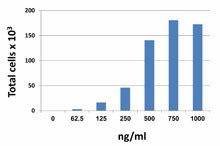
-

Baf3-hCXCR5 transfectants attracted by human CXCL13.
CXCL13 was initially described as a chemokine highly expressed in the follicles of Peyer's patches, spleen, and lymph nodes and as a strong chomoattractant for B cells. CXCL13 is expressed by T follicular helper cells, dendritic cells, and stromal cells in B cell areas of secondary lymphoid tissue. CXCR5, the receptor for CXCL13, was initially cloned from Burkitt’s lymphoma cells and named BLR1. CXCR5 is highly expressed in those cells and B cells. CXCL13, CCL19, and CCL21 are involved in the formation of tertiary lymphoid tissues in chronic antigen-induced arthritis. CXCL13 takes part in the allergic airway inflammatory process. In addition, high expression of CXCL13 has been linked to lupus, Helicobacter pylori-associated gastritis, multiple sclerosis, and rheumatoid arthritis. In summary, CXCL13 is highly expressed at the sites of new lymphoid tissue formation in a variety of chronic inflammatory conditions.
Product DetailsProduct Details
- Source
- Human CXCL13, amino acids Val23-Arg94 (Accession# NM_006419.2) was expressed in E. coli.
- Molecular Mass
- The 72 amino acid recombinant protein has a predicted molecular mass of approximately 8.6 kD. The DTT-reduced protein migrates at approximately 12 kD, and the non-reduced protein migrates at approximately 15 kD by SDS-PAGE. The N-terminal amino acid is Val.
- Purity
- >98%, as determined by Coomassie stained SDS-PAGE.
- Formulation
- 0.22 µm filtered protein solution is in PBS.
- Endotoxin Level
- Less than 0.01 ng per µg cytokine as determined by the LAL method.
- Concentration
- 10 and 25 µg sizes are bottled at 200 µg/mL. 100 µg size and larger sizes are lot-specific and bottled at the concentration indicated on the vial. To obtain lot-specific concentration and expiration, please enter the lot number in our Certificate of Analysis online tool.
- Storage & Handling
- Unopened vial can be stored between 2°C and 8°C for up to 2 weeks, at -20°C for up to six months, or at -70°C or colder until the expiration date. For maximum results, quick spin vial prior to opening. The protein can be aliquoted and stored at -20°C or colder. Stock solutions can also be prepared at 50 - 100 µg/mL in appropriate sterile buffer, carrier protein such as 0.2 - 1% BSA or HSA can be added when preparing the stock solution. Aliquots can be stored between 2°C and 8°C for up to one week and stored at -20°C or colder for up to 3 months. Avoid repeated freeze/thaw cycles.
- Activity
- Bioactivity was measured by its property to chemoattract Baf3-hCXCR5 transfectants in a dose dependent manner.
- Application
-
Bioassay
- Application Notes
-
BioLegend carrier-free recombinant proteins provided in liquid format are shipped on blue-ice. Our comparison testing data indicates that when handled and stored as recommended, the liquid format has equal or better stability and shelf-life compared to commercially available lyophilized proteins after reconstitution. Our liquid proteins are verified in-house to maintain activity after shipping on blue ice and are backed by our 100% satisfaction guarantee. If you have any concerns, contact us at tech@biolegend.com.
Antigen Details
- Structure
- Chemokine
- Distribution
-
Follicular dendritic cells, monocytes, macrophages, and stromal cells from germinal centers. CXCL13 is derived from endothelial cells, synovial fibroblasts, and follicular dendritic cells in RA.
- Function
- CXCL13 chemoattracts B cells and is a key chemokine for B-cell entry into lymphoid follicles. It also takes part in the formation of ectopic lymphoid tissue in chronic inflammation. CXCL13 production by follicular Th cells is induced by TCR activation.
- Interaction
- B cells and follicular helper CD4 T cells.
- Ligand/Receptor
- CXCR5 (CD185).
- Biology Area
- Cell Biology, Signal Transduction
- Molecular Family
- Cytokines/Chemokines
- Antigen References
-
1. Gunn MD, et al. 1998. Nature 391:799.
2. Legler DF, et al. 1998. J. Exp. Med. 187:655.
3. Kim CH, et al. 2004. Blood 104:1952.
4. McDonald KG, et al. 2010. Am. J. Pathol. 176:2367.
5. Gatto D, et al. 2011. J. Immunol. 187:4621. - Gene ID
- 10563 View all products for this Gene ID
- UniProt
- View information about CXCL13 on UniProt.org
Related FAQs
- Why choose BioLegend recombinant proteins?
-
• Each lot of product is quality-tested for bioactivity as indicated on the data sheet.
• Greater than 95% Purity or higher, tested on every lot of product.
• 100% Satisfaction Guarantee for quality performance, stability, and consistency.
• Ready-to-use liquid format saves time and reduces challenges associated with reconstitution.
• Bulk and customization available. Contact us.
• Learn more about our Recombinant Proteins. - How does the activity of your recombinant proteins compare to competitors?
-
We quality control each and every lot of recombinant protein. Not only do we check its bioactivity, but we also compare it against other commercially available recombinant proteins. We make sure each recombinant protein’s activity is at least as good as or better than the competition’s. In order to provide you with the best possible product, we ensure that our testing process is rigorous and thorough. If you’re curious and eager to make the switch to BioLegend recombinants, contact your sales representative today!
- What is the specific activity or ED50 of my recombinant protein?
-
The specific activity range of the protein is indicated on the product datasheets. Because the exact activity values on a per unit basis can largely fluctuate depending on a number of factors, including the nature of the assay, cell density, age of cells/passage number, culture media used, and end user technique, the specific activity is best defined as a range and we guarantee the specific activity of all our lots will be within the range indicated on the datasheet. Please note this only applies to recombinants labeled for use in bioassays. ELISA standard recombinant proteins are not recommended for bioassay usage as they are not tested for these applications.
- Have your recombinants been tested for stability?
-
Our testing shows that the recombinant proteins are able to withstand room temperature for a week without losing activity. In addition the recombinant proteins were also found to withstand four cycles of freeze and thaw without losing activity.
- Does specific activity of a recombinant protein vary between lots?
-
Specific activity will vary for each lot and for the type of experiment that is done to validate it, but all passed lots will have activity within the established ED50 range for the product and we guarantee that our products will have lot-to-lot consistency. Please conduct an experiment-specific validation to find the optimal ED50 for your system.
- How do you convert activity as an ED50 in ng/ml to a specific activity in Units/mg?
-
Use formula Specific activity (Units/mg) = 10^6/ ED50 (ng/mL)
 Login/Register
Login/Register 







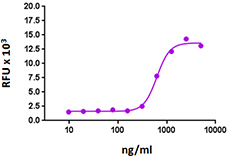
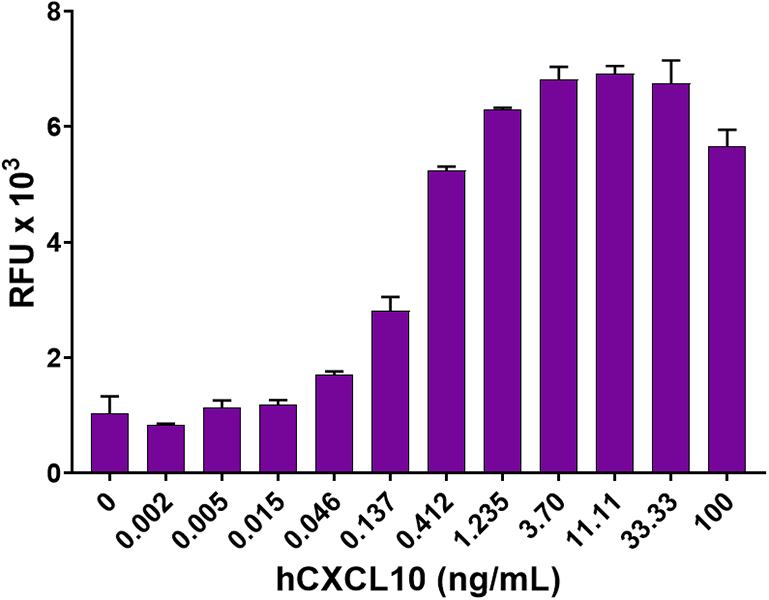
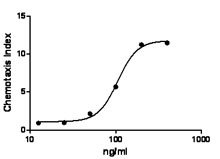
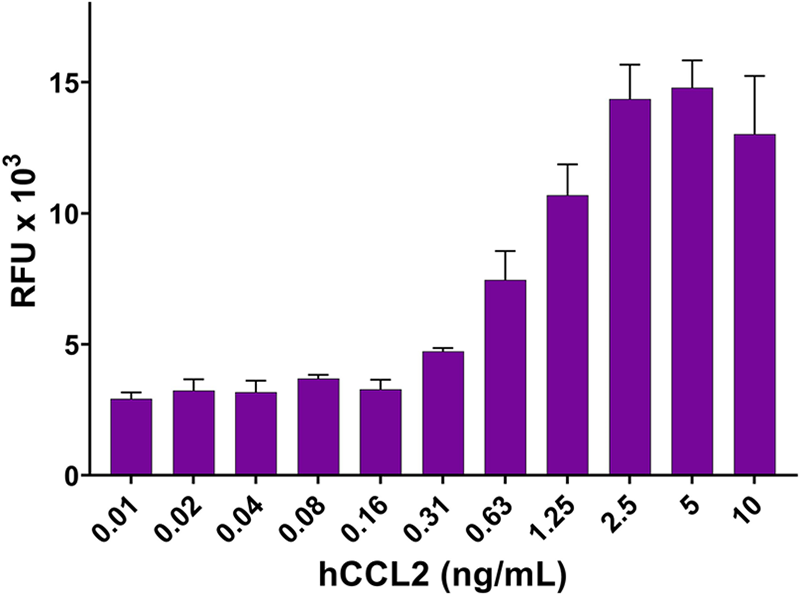



Follow Us